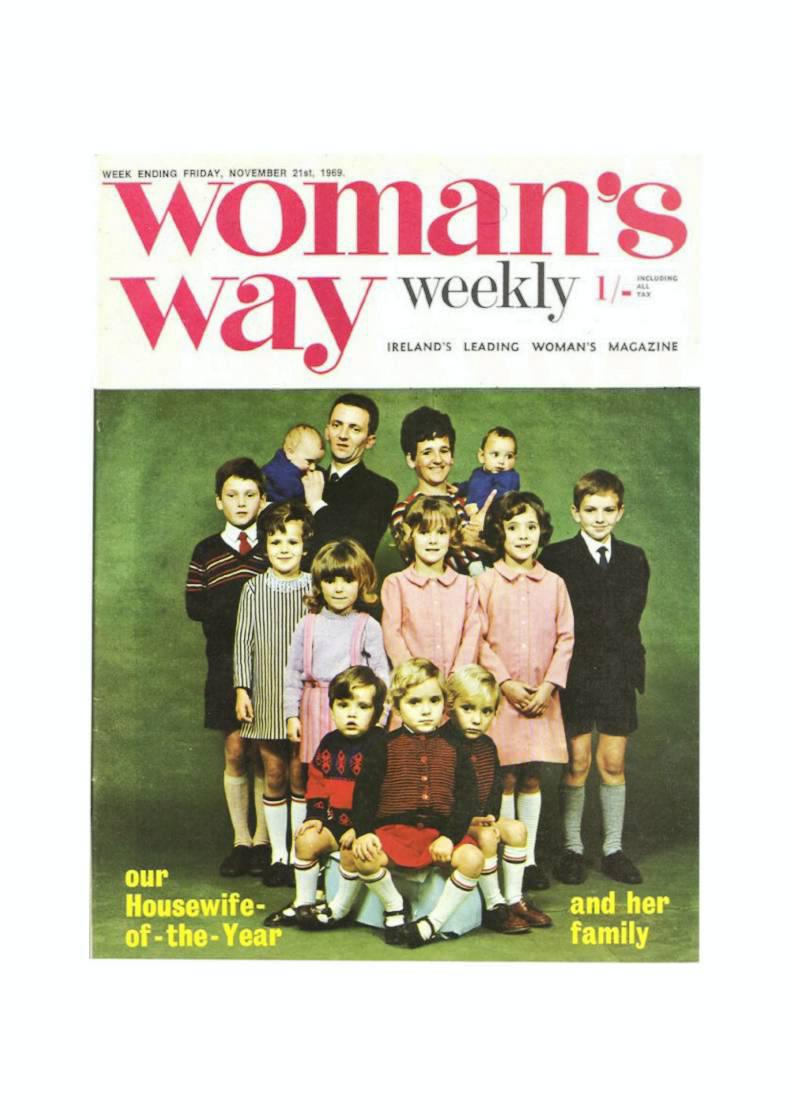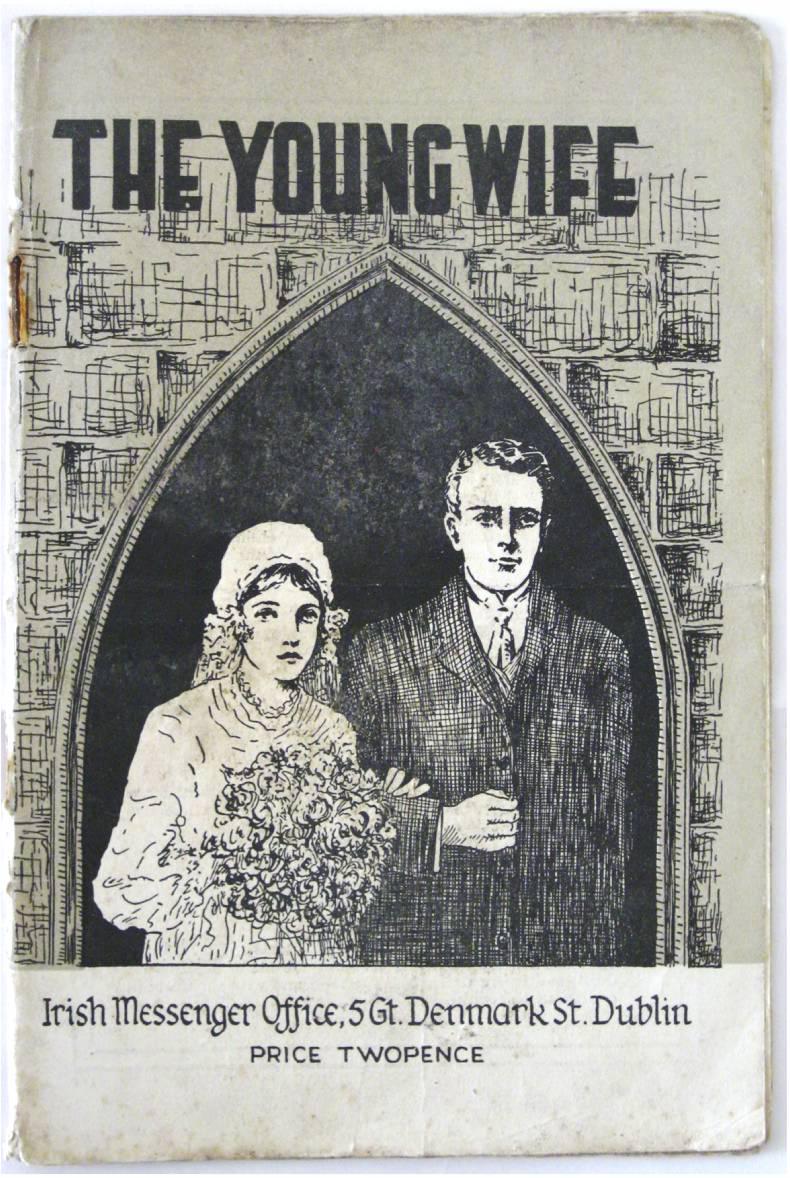When Dr Ciara Meehan was looking at a copy of Woman’s Choice magazine from the 1960s, she came across a reader quiz called: Are you an ideal wife?
“Question one asks: ‘List in order of importance the following: home, husband, career and children,’” says Ciara.
“And, according to the answers, your priorities should be husband first, then children, then the home and, of course, career at the end.”
This quiz is just one of the items on display at Modern Wife, Modern Life, which runs at the National Print Museum of Ireland in Dublin from 1 July to 30 August. It is an exhibit curated by Ciara which aims to explore the lives of Irish women in the 1960s as seen through the pages of the magazines of that era.
Ciara, who is a senior lecturer in 20th century history at the University of Hertfordshire in the UK, first began work on the exhibit a year ago as she felt that, while researching political policy of that period, there was little record of what life was like for most ordinary people.
“Particularly the position of women, because I had been looking at things like abortion and divorce and contraception and women were always discussed in a very abstract manner,” she explains.
“You don’t find everyday life in the traditional archival sources.”
Much of Ciara’s research focused on magazines such as Woman’s Way, Woman’s Choice and Woman’s View, through the archives at The National Library.
The problem pages at that time, for example, throw up some typical conundrums – and interesting advice.
“You have some wives writing in to say: ‘I’m really fed up doing everything around the house, I think my husband should play more of a role,’ and generally they get quite a harsh response saying: ‘You’re lazy,’” says Ciara.
“So you do see in the 1960s this younger generation of new wives who are expecting more out of their marriage, but are being put in their place.”
Beauty tips might also raise eyebrows.
“My favourite piece is a column that’s for the newly married wife and it tells her that now she has to share her room with her husband, she has to be very careful about how she goes about her beauty regime because your husband should never see you in the process – he should only ever see the finished product,” says Ciara.
New technologies like TVs, washing machines and dishwashers are also promoted as part of an aspirational lifestyle for the modern wife, though so too is the idea that women should learn to drive, which Ciara believes is a signal of the earlier shoots of feminism in Ireland.
“While the magazines appear on the surface to place women within the home, if you look at them more closely, they are pushing the boundaries a bit and suggesting that women should have greater freedom,” she says.
Indeed, the debate over whether or not women should continue to work after marriage is a hot topic.
“They are divided between those who argue that if the wife starts to work, the husband changes from being the bread winner to a money earner and that changes the gender dynamic within the home,” says Ciara.
“The implication – according to the woman who wrote one letter – was that if he loses his identity, he could potentially stray and look for his identity in another home with another woman.
“And then there are younger women who write in and say: ‘I have been working until I got married and I have built up a skill set and I don’t want to see that go to waste.’
“Generally speaking, although there is some difference of opinion within the magazines, I would say that, overall, magazines are in favour of women working.”
As well as the magazine articles, the exhibit also showcases items from the home that reflect life in the 1960s, many of which are on loan from members of the public. These include a Pax sewing machine, a wedding album, the popular cookbook Full & Plenty by Maura Laverty, a copy of a letter with an offer of employment subject to the conditions of the marriage bar and a Morphy Richards portable hairdryer, which was a huge trend at the time as it allowed a woman to go about her chores while her hair set.
While the exhibition runs until the end of the summer, in the long-term, Ciara wants to create an extensive archive that reflects the real lives of Irish women of that period. In the coming months, she will be hosting a number of road shows to meet with members of the public who wish to share items like old diaries, letters, photos, knitting or sewing patterns, kitchen utensils, recipes or simply memories, which will be scanned digitally and returned to the owner, though she is also happy to liaise with people who wish to take part by post, phone or email.
“For anybody who can remember the 1960s, whether they were a child or an adult at the time, it’s an opportunity for them to leave a record of their life basically,” she says.
For further details about the Modern Wife, Modern life exhibit, visit
http://modernwifemodernlifeexhibition.com
When Dr Ciara Meehan was looking at a copy of Woman’s Choice magazine from the 1960s, she came across a reader quiz called: Are you an ideal wife?
“Question one asks: ‘List in order of importance the following: home, husband, career and children,’” says Ciara.
“And, according to the answers, your priorities should be husband first, then children, then the home and, of course, career at the end.”
This quiz is just one of the items on display at Modern Wife, Modern Life, which runs at the National Print Museum of Ireland in Dublin from 1 July to 30 August. It is an exhibit curated by Ciara which aims to explore the lives of Irish women in the 1960s as seen through the pages of the magazines of that era.
Ciara, who is a senior lecturer in 20th century history at the University of Hertfordshire in the UK, first began work on the exhibit a year ago as she felt that, while researching political policy of that period, there was little record of what life was like for most ordinary people.
“Particularly the position of women, because I had been looking at things like abortion and divorce and contraception and women were always discussed in a very abstract manner,” she explains.
“You don’t find everyday life in the traditional archival sources.”
Much of Ciara’s research focused on magazines such as Woman’s Way, Woman’s Choice and Woman’s View, through the archives at The National Library.
The problem pages at that time, for example, throw up some typical conundrums – and interesting advice.
“You have some wives writing in to say: ‘I’m really fed up doing everything around the house, I think my husband should play more of a role,’ and generally they get quite a harsh response saying: ‘You’re lazy,’” says Ciara.
“So you do see in the 1960s this younger generation of new wives who are expecting more out of their marriage, but are being put in their place.”
Beauty tips might also raise eyebrows.
“My favourite piece is a column that’s for the newly married wife and it tells her that now she has to share her room with her husband, she has to be very careful about how she goes about her beauty regime because your husband should never see you in the process – he should only ever see the finished product,” says Ciara.
New technologies like TVs, washing machines and dishwashers are also promoted as part of an aspirational lifestyle for the modern wife, though so too is the idea that women should learn to drive, which Ciara believes is a signal of the earlier shoots of feminism in Ireland.
“While the magazines appear on the surface to place women within the home, if you look at them more closely, they are pushing the boundaries a bit and suggesting that women should have greater freedom,” she says.
Indeed, the debate over whether or not women should continue to work after marriage is a hot topic.
“They are divided between those who argue that if the wife starts to work, the husband changes from being the bread winner to a money earner and that changes the gender dynamic within the home,” says Ciara.
“The implication – according to the woman who wrote one letter – was that if he loses his identity, he could potentially stray and look for his identity in another home with another woman.
“And then there are younger women who write in and say: ‘I have been working until I got married and I have built up a skill set and I don’t want to see that go to waste.’
“Generally speaking, although there is some difference of opinion within the magazines, I would say that, overall, magazines are in favour of women working.”
As well as the magazine articles, the exhibit also showcases items from the home that reflect life in the 1960s, many of which are on loan from members of the public. These include a Pax sewing machine, a wedding album, the popular cookbook Full & Plenty by Maura Laverty, a copy of a letter with an offer of employment subject to the conditions of the marriage bar and a Morphy Richards portable hairdryer, which was a huge trend at the time as it allowed a woman to go about her chores while her hair set.
While the exhibition runs until the end of the summer, in the long-term, Ciara wants to create an extensive archive that reflects the real lives of Irish women of that period. In the coming months, she will be hosting a number of road shows to meet with members of the public who wish to share items like old diaries, letters, photos, knitting or sewing patterns, kitchen utensils, recipes or simply memories, which will be scanned digitally and returned to the owner, though she is also happy to liaise with people who wish to take part by post, phone or email.
“For anybody who can remember the 1960s, whether they were a child or an adult at the time, it’s an opportunity for them to leave a record of their life basically,” she says.
For further details about the Modern Wife, Modern life exhibit, visit
http://modernwifemodernlifeexhibition.com






 This is a subscriber-only article
This is a subscriber-only article








SHARING OPTIONS: